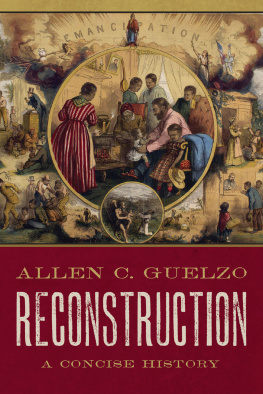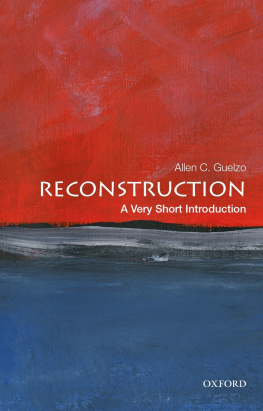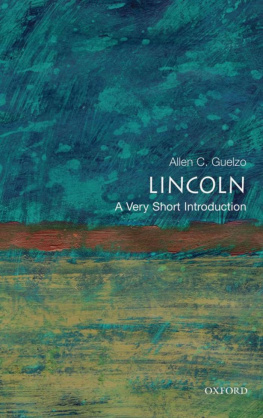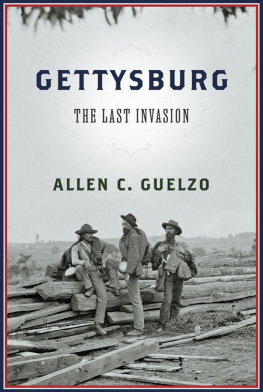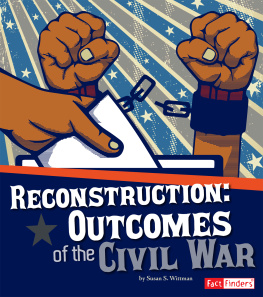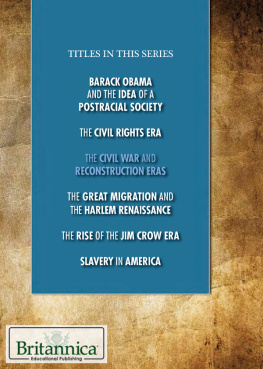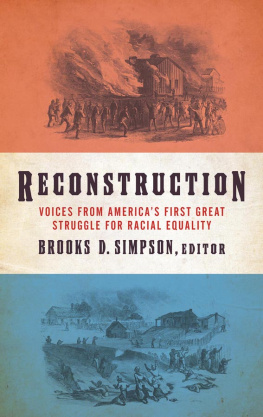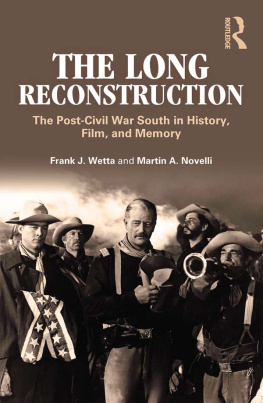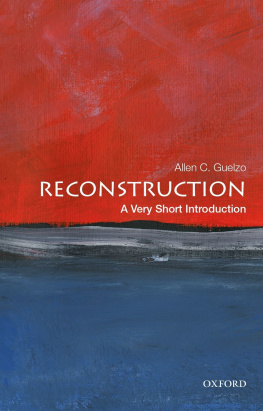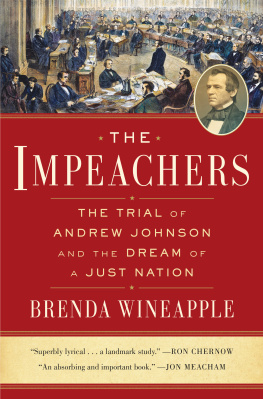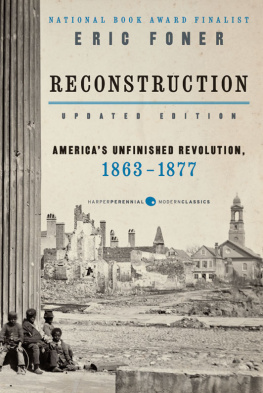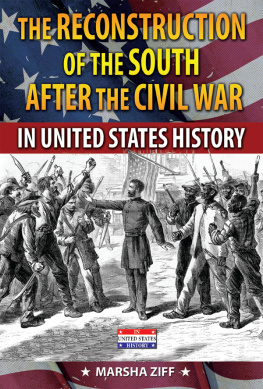RECONSTRUCTION

Oxford University Press is a department of the University of Oxford. It furthers the Universitys objective of excellence in research, scholarship, and education by publishing worldwide. Oxford is a registered trade mark of Oxford University Press in the UK and certain other countries.
Published in the United States of America by Oxford University Press 198 Madison Avenue, New York, NY 10016, United States of America.
Oxford University Press 2018
All rights reserved. No part of this publication may be reproduced, stored in a retrieval system, or transmitted, in any form or by any means, without the prior permission in writing of Oxford University Press, or as expressly permitted by law, by license, or under terms agreed with the appropriate reproduction rights organization. Inquiries concerning reproduction outside the scope of the above should be sent to the Rights Department, Oxford University Press, at the address above.
You must not circulate this work in any other form and you must impose this same condition on any acquirer.
Library of Congress Cataloging-in-Publication Data
Names: Guelzo, Allen C., author.
Title: Reconstruction : a concise history / Allen C. Guelzo.
Description: New York, NY : Oxford University Press, [2018] | Includes bibliographical references and index.
Identifiers: LCCN 2017036014 (print) | LCCN 2017036811 (ebook) | ISBN 9780190865702 (updf) | ISBN 9780190865719 (epub) | ISBN 9780190865696 (hardback : alk. paper)
Subjects: LCSH: Reconstruction (U.S. history, 18651877) | United StatesPolitics and government18651877.
Classification: LCC E668 (ebook) | LCC E668 .G89 2018 (print) | DDC 973.8dc23
LC record available at https://lccn.loc.gov/2017036014
CONTENTS
Several talented and thoughtful historians and commentators took away time from their own schedules and their own more important tasks to read and review the manuscript of Reconstruction; I regret to admit that I have no better means of recognizing their generosity and perspicacity than these simple acknowledgements. James Oakes (City University of New York) was the first on whom I tried out the idea of Reconstruction as a bourgeois revolution, and his unfeigned interest fed the spark until it glowed. Louis Masur (Rutgers University) combed through each chapter, relentlessly sniffing out every gaffe and indiscretion, as did Jonathan White (Christopher Newport University). Michael Lind (New America Foundation), Steven Woodworth (Texas Christian University), Matthew Norman (University of Cincinnati), and Brian M. Jordan (Sam Houston State University) also volunteered themselves to read parts here and there. Any errors that might unfortunately appear in the interpretations and writing here must be blamed on me; however, any praise must be shared equally with all of those named above.
The era in US history known as Reconstruction forms a sort of coda to the traumatic years of the American Civil War, which lasted from 1861 to 1865. It embraces the twelve years of active effort to rebuild and reconstitute the American Union after the attempt by the Confederate States of America to secede from it, and in some sense (because it had no official starting or ending date) it spluttered on well into the 1890s.
But Reconstruction can also reasonably be characterized as the ugly duckling of American history. The twelve years that are the conventional designation of the Reconstruction period, from 1865 to 1877, teem with associations and developments that seem regrettable, if not simply baleful. They left a long legacy of bitterness, especially among Southerners who believed that they had fought an honorable war and were handed a dishonorable peace, as well as Southerners who refused to accept defeat and manufactured the myth of a glorious Lost Cause to justify themselves and their continuing belief in the rightness of the Confederate project. Reconstruction also coincided with an eruption of notorious levels of graft, corruption, and fraud in American civil governmentsnot least in the ones erected by federal force in the former rebel states. But Reconstruction is probably best known, and least liked, as the greatest missed opportunity Americans ever had to erase the treacherous impact of slavery and race in a reconstructed and unified nation. There is, in other words, something in Reconstruction for nearly every American to regret.
The term resurfaced in 1862, this time to describe the pacification policies that the federal government might deploy once the Union armies had suppressed the Confederate rebellion. Articulating these policies turned out to be no easy matter. Abraham Lincoln, the president whose inauguration had triggered Southern secession in the first place, was never at ease using the word reconstructionhe qualified it with add-ons like what is called reconstruction or a plan of reconstruction (as the phrase goes)and preferred to speak of the re-inauguration of the national authority or the need to re-inaugurate loyal state governments.
But use it Lincoln did, however grudgingly, and he built all of his assumptions about the shape of Reconstruction on one single presupposition: the constitutional impossibility of secession. The Constitution granted no right to the states to secede; ergo, the Southern states had never really left the Union, and the so-called Confederate States were really only insurrectionary regimes. I hold, that in contemplation of universal law, and of the Constitution, the Union of these States is perpetual, Lincoln said in his first inaugural address. On that basis, he sanctioned the creation of a Unionist Virginia government-in-exile and installed temporary military governors in areas of Tennessee, North Carolina, and Arkansas, who proposed to carry on the usual functions of state government as though secession (and the secessionists) had never existed.
But whatever the legal and constitutional arguments, the Confederacy did not look at all like a mere insurrection, like the Whiskey Rebellion or the Dorr Rebellion. It comprised eleven contiguous states, with a population of more than nine million (Belgium, by comparison, had a population of less than five million, Scandinavia eighteen million), and it created a new government larger than most European nation-states, along with armies to defend it. The leaders of the South have made an army, and they have made what is more, they have made a nation, declared William Ewart Gladstone, the United Kingdoms chancellor of the exchequer.
Ironically, Gladstones view was echoed by several of the most fervent members of Lincolns own party, the Republicans. They had become known as radicals from the outset of the war, and though the term described only about half of the Senates Republicans, and slightly more than that in the House of Representatives, they were unapologetic in asserting that the Confederate states had lost all title to statehood by seceding.
What had really happened when the Southern states seceded, Massachusetts senator Charles Sumner countered, was State suicide or State forfeiture or State abdication. Whatever the name, secession had converted the old Southern states into something less than what they had been. What was more, it was the prerogative of Congress, not the president, to define that status and create the policies which control any ideas of reconstructing the Union. Thaddeus Stevens, Sumners counterpart in the House of Representatives, wanted to go even further: We propose to confiscate all the estates of every rebel belligerent whose estate was worth $10,000, or whose land exceeded two hundred acres in quantity. As for the Confederate leadershipand how many captive enemies it would be proper to execute, as an example to nationsStevens would bleakly leave others to judge.

